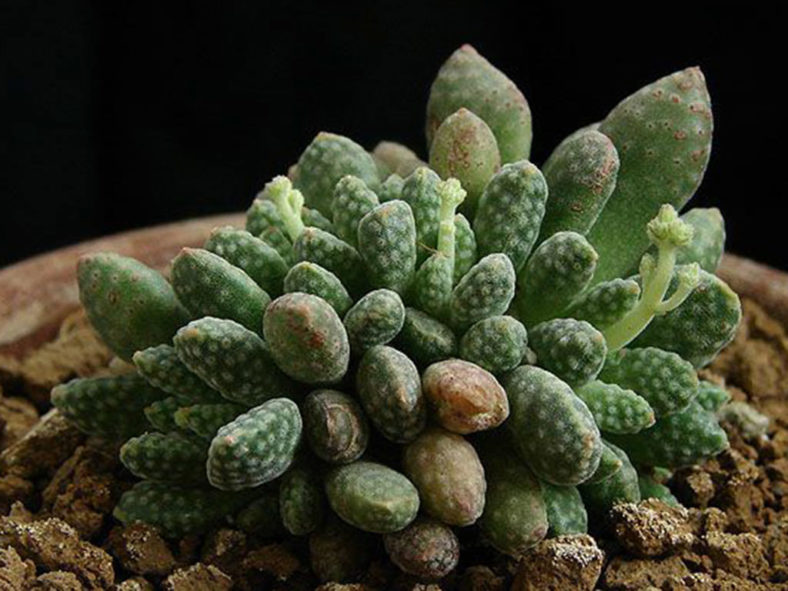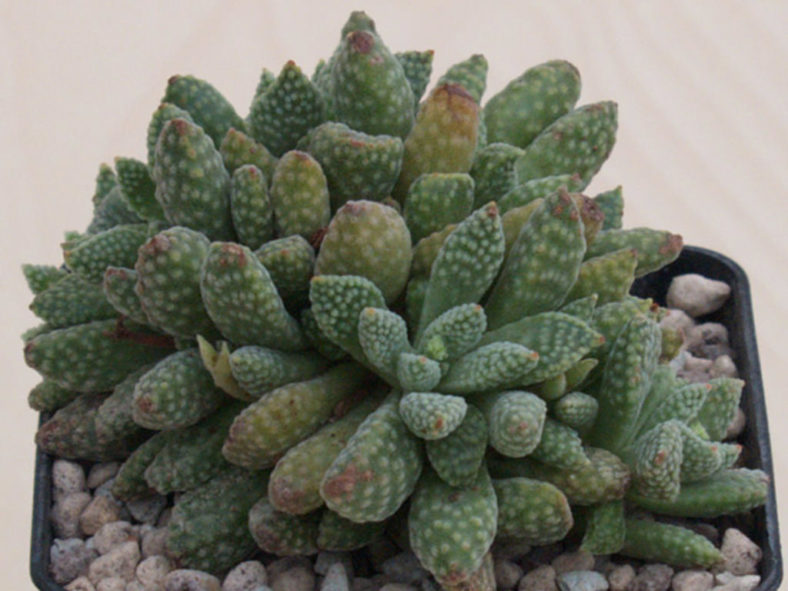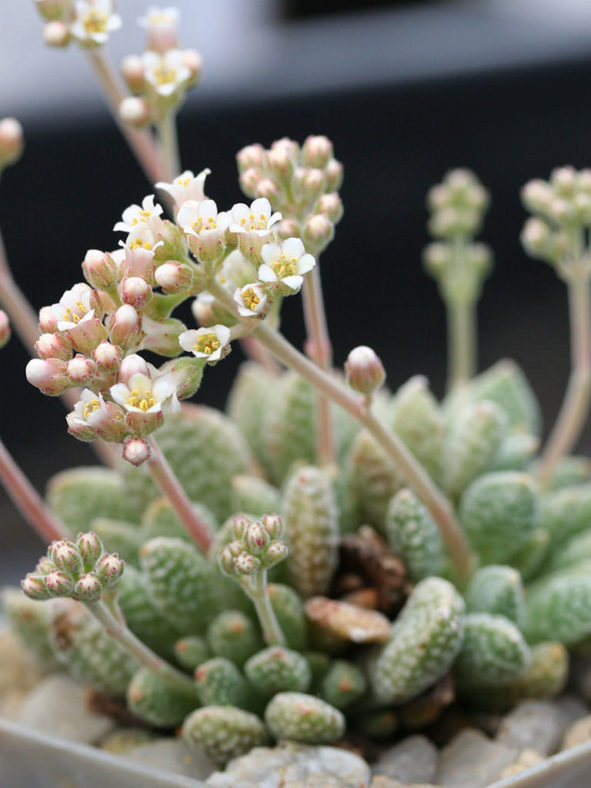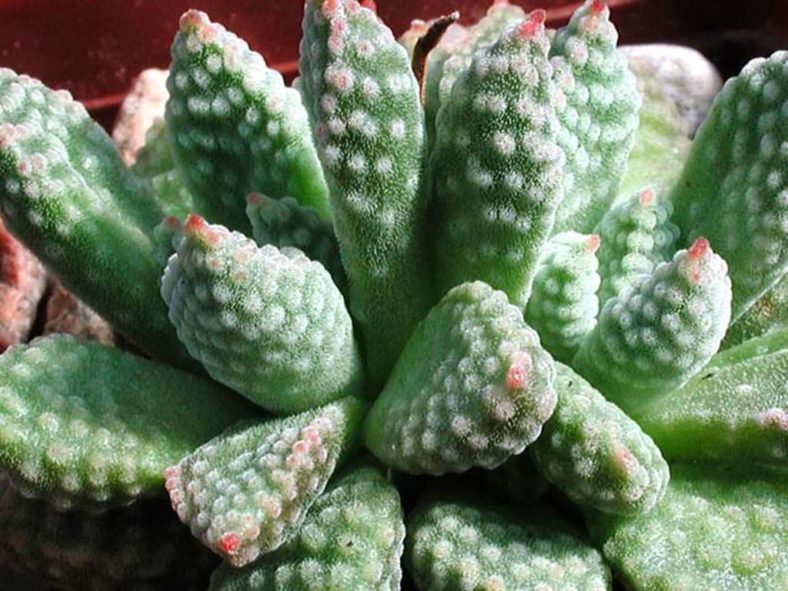Scientific Name
Crassula ausensis subsp. titanopsis P. Pavelka
Scientific Classification
Family: Crassulaceae
Subfamily: Crassuloideae
Genus: Crassula
Etymology
The subspecific epithet "titanopsis" (pronounced "ty-tan-OP-sis") refers to the resemblance of this subspecies to the plants in the genus Titanopsis.
Origin
Crassula ausensis subsp. titanopsis is native to southern Namibia.
Description
Crassula ausensis subsp. titanopsis is a small succulent that forms attractive clusters of small, stemless rosettes of green to grey-green leaves covered with transparent, tufted hairs. The dense clusters can reach a diameter of up to 4 inches (10 cm). The leaves are ovate to obovate, measuring up to 0.8 inches (2 cm) in length, 0.5 inches (1.3 cm) in width, and 0.3 inches (0.7 cm) in thickness. The apex of the leaves is more or less rusty orange to rusty red.
From late fall to early winter, small, white flowers appear in a thyrse with 1 to 3 dichasia on a stalk that can grow up to 2 inches (5 cm) tall.

How to Grow and Care for Crassula ausensis subsp. titanopsis
Hardiness: USDA hardiness zones 9b to 11b: from 25°F (-3.9°C) to 50°F (10°C).
Crassulas are easy to grow but susceptible to mealybugs and fungal diseases. As with all succulents, overwatering is fatal, so err on the side of too dry rather than too wet. Never let your plant sit in water. If you water from beneath by allowing the plant to sit in a saucer, pour off any excess water after a few minutes.
These succulents are generally started by division, offsets, or leaf cuttings. Crassulas can be easily propagated from a single leaf. Sprout leaves by placing them into a potting mix for succulents, then cover the dish until they sprout.
Repot as needed, preferably during the warm season. To repot your Crassula, ensure the soil is dry before repotting, then gently remove the pot. Knock away the old soil from the roots, removing any rotted or dead roots. Treat any cuts with a fungicide. Place the plant in its new pot and backfill it with potting soil, spreading the roots as you repot. Leave the plant dry for a week or so, then begin to water lightly to reduce the risk of root rot.
Learn more at How to Grow and Care for Crassula.
Links
- Back to genus Crassula
- Succupedia: Browse succulents by Scientific Name, Common Name, Genus, Family, USDA Hardiness Zone, Origin, or cacti by Genus
Photo Gallery
Click on a photo to see a larger version.


